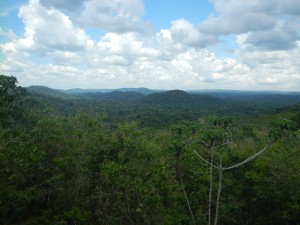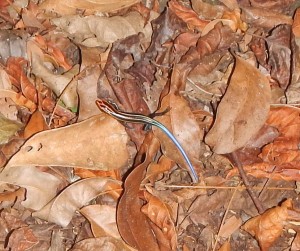Today we took on the 14-mile hike to pick up the camera traps that we put out on Wednesday. We picked up seven traps before lunch, and five traps after. This time the trek went significantly faster and was much easier, though my full-leg red rash reappeared. I’m really hoping this won’t be a recurring issue in the future.

A few different species of mammals were seen today, most of which were caught in the camera trap images. Though I did not see it, apparently an agouti was seen by others in the group during morning bird watching. Some really exciting species were caught by the traps. Another agouti and an ocelot (!!!!) were caught by the same trap in a naturally open area, at different times. We also got a great picture of a tapir (endangered species) along a human path. Though the sample size of species in our camera trap images was small, all of this was still super exciting for me, especially the ocelot capture.
I also gave my mammal taxon briefing in the evening. This was my favorite of all the presentations to make and give, and I really enjoyed watching others using some of the information from my presentation in attempting to identify species in the camera trap images.
It’s pretty sad to have to leave this place. The rainforest is magical in the amount of life it holds, and even though I’ve barely slept all week, I’ve felt as strong as ever here. Hopefully I can return some day!


